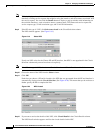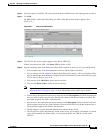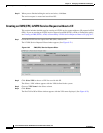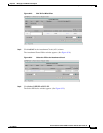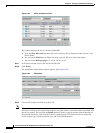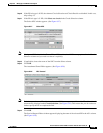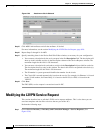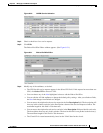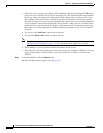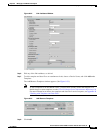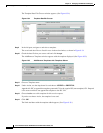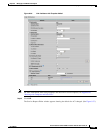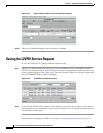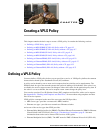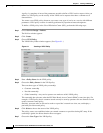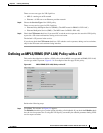
8-22
Cisco IP Solution Center L2VPN and Carrier Ethernet User Guide, 6.0
OL-21636-01
Chapter 8 Managing an L2VPN Service Request
Modifying the L2VPN Service Request
• If the policy was set up for you to define a VC ID manually, enter it into the empty VC ID field. If
policy was set to “auto pick” the VC ID, ISC will supply a VC ID, and this field will not be editable.
In the case where you supply the VC ID manually, if the entered value is in the provider’s range,
ISC validates if the entered value is available or allocated. If the entered value has been already
allocated, ISC generates an error message saying that the entered value is not available and prompts
you to re-enter the value. If the entered value is in the provider’s range, and if it is available, then it
is allocated and is removed from the VC ID pool. If the entered value is outside the provider’s range,
ISC displays a warning saying that no validation could be performed to verify if it is available or
allocated.
• You can also click Add Link to add an end-to-end wire.
• You can click Delete Link to delete an end-to-end wire.
Note If you are attempting to decommission a service request to which a template has been added, see
Monitoring Service Requests, page 11-10 for information on the proper way to do this.
• The ID number is system-generated identification number for the circuit.
• The Circuit ID is created automatically, based on the service. For example, for Ethernet, it is based
on the VLAN number; for Frame Relay, it is based on the DLCI; for ATM, it is based on the
VPI/VCI.
Step 5 To edit AC attributes, click the Default button.
The Link Attributes window appears. (See Figure 8-32.)



